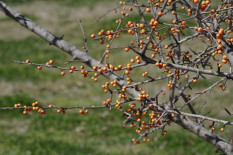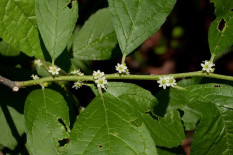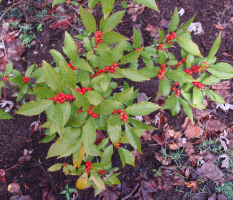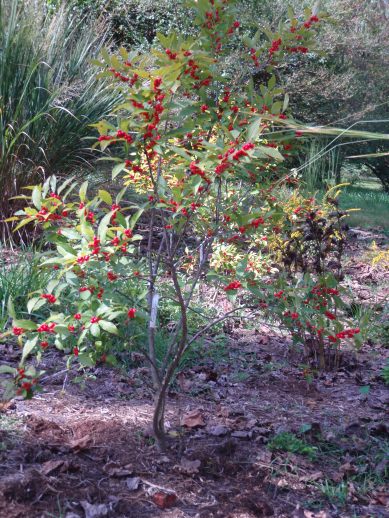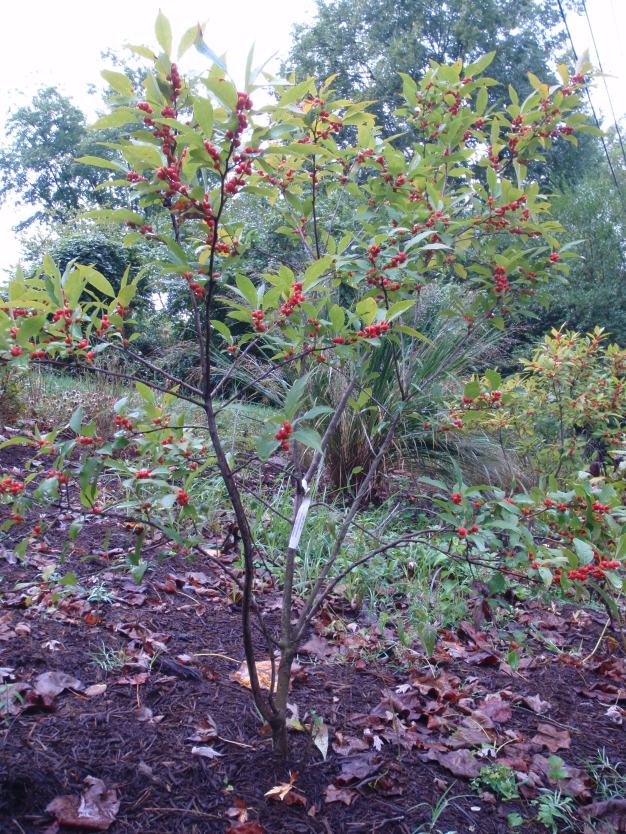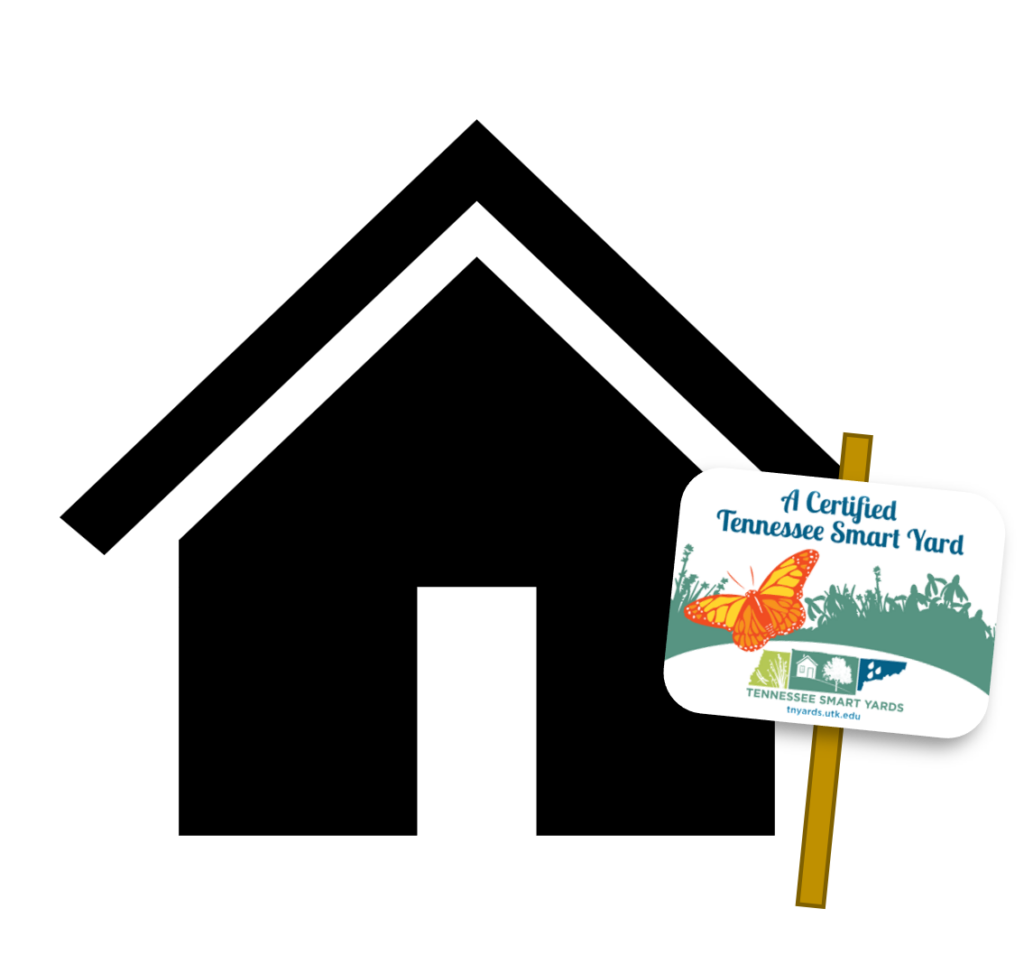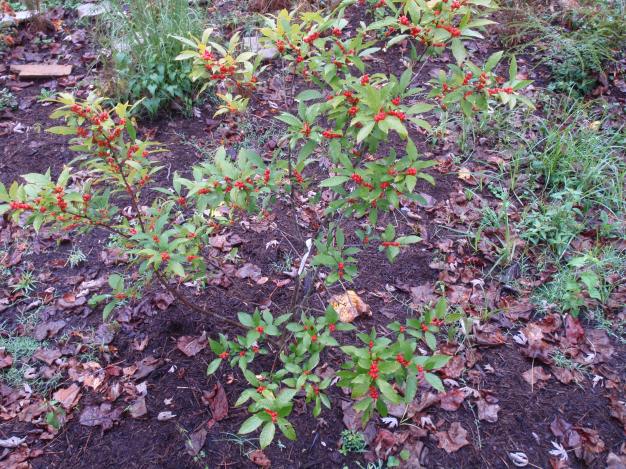
Common Name: Winterberry
Full to part sun; wet to medium moisture level; prefers rich organic soils, medium to fine soils (primarily peats or mucks) but tolerates heavy soil; moderately acid pH.
6-10 feet height by 6-10 feet spread; blooms in June, greenish white flowers; scarlet red berries on female plants in late summer.
Growth Rate: Slow in youth but can be induced into medium growth rate with fertilizer and water. Suckers to form colonies.
Maintenance: Infrequent disease and insect problems. Some susceptibility to tar spots, leaf spots and powdery mildew but nothing serious.
Propagation: Difficult from seed and moderately difficult from cuttings
Native Region: Isolated clusters of counties across the state but primarily in Cumberland Plateau and southern Coastal Plain
A deciduous holly that occurs naturally in swamps, bogs, wet meadows and wet forests but is still fairly adaptable in the garden provided the soil is not droughty. Hardiest of the native hollies. Requires male and female plants to set fruit, and females laden with red fruits make a spectacular sight in winter. Excellent for mass planting, shrub borders, waterside planting and wet soils. Will develop chlorosis in high pH alkaline soils. Large number of cultivars available. Attracts birds.
